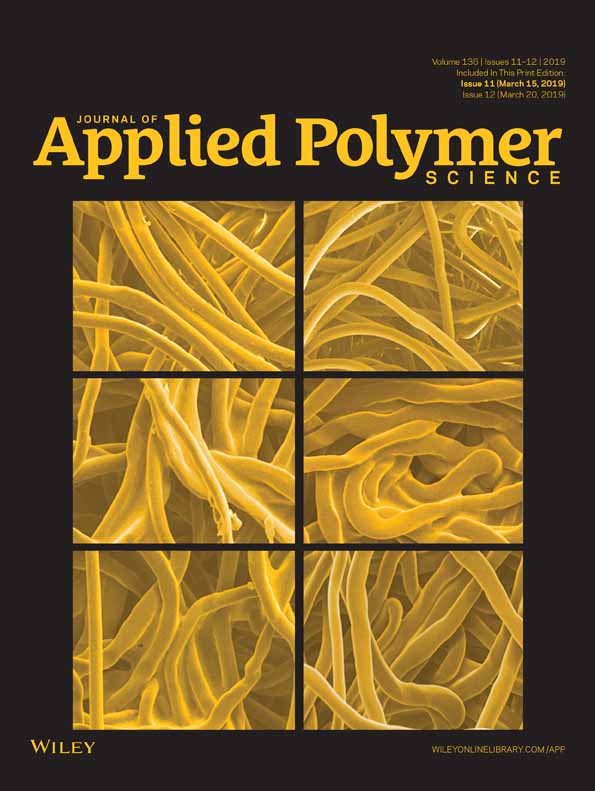Synthesis of silane-modified polyphosphate esters and its application in transparent flame-retardant coatings
ABSTRACT
Polyphosphate ester (PPAE) made from poly(phosphoric acid), pentaerythritol, and 1,3-butylene glycol has been synthesized. The PPAE reacted with dimethyldichlorosilane (DMDCS) to improve its thermal stability and flame retardancy. Four silane-modified polyphosphate esters (SiPPAEs) were obtained. FTIR, 31P NMR, and 29Si NMR results showed that the SiCl bond of DMDCS could react with the COH and POH bonds of PPAE, producing SiOC and POSi bond in SiPPAEs. Different transparent coatings were obtained by mixing the PPAE and SiPPAEs with amino resin. The results of TGA showed that the stability of SiPPAEs was higher than that of PPAE. With the increase of silane content, the thermal stability of the coating increased. As the silane content increased within a certain range, the fire resistance and expansion coefficient increased. But too high silane content had adverse effects on the expansion and reduced the overall insulation effect. The digital photos and SEM/EDX microphotographs of coatings after combustion showed that silica segments could enriched in the surface to form a hard protective layer to prevent further degradation of the char layer. © 2018 Wiley Periodicals, Inc. J. Appl. Polym. Sci. 2019, 136, 47199.




